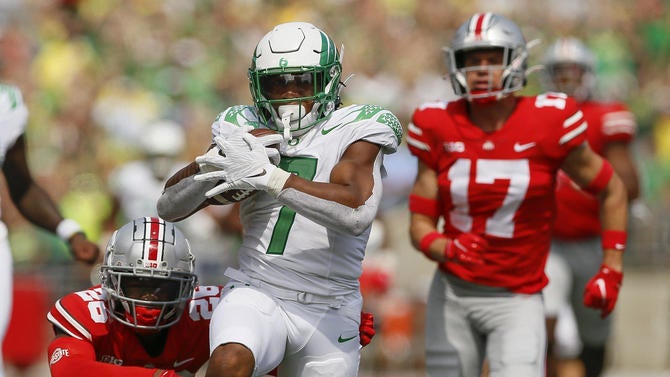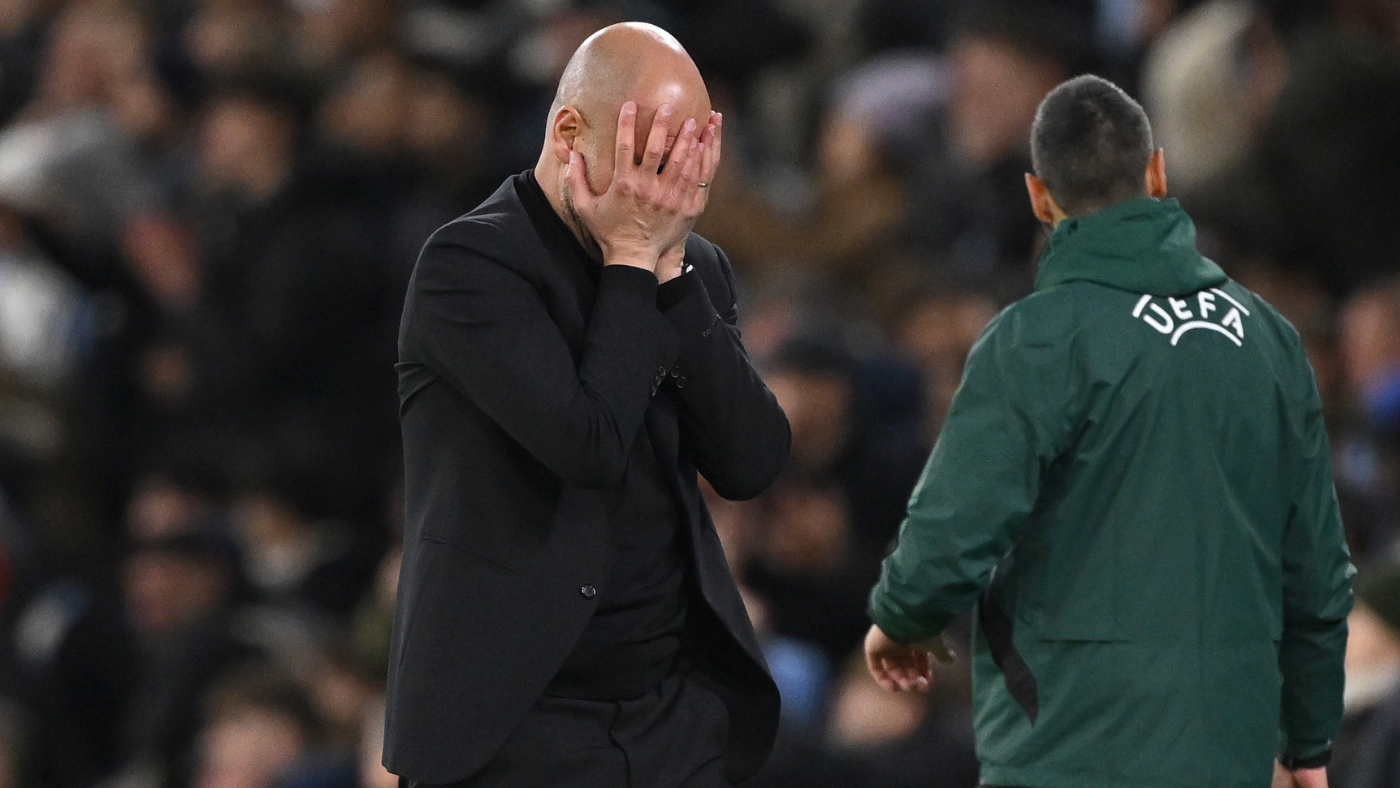We should have seen it coming as the season began in Week 0. Nebraska punt returner Cam Taylor-Britt bizarrely fielded a punt at the 1-yard line, fell into the end zone, attempted to throw it out and was called for a safety to spur an Illinois upset that has aged like fine milk.
The following week, as the full slate of college football action began around the country, the picture really came into focus. No. 10 North Carolina lost to Virginia Tech; No. 12 Wisconsin lost to Penn State; No. 3 Clemson lost to Georgia; No. 9 Notre Dame went to overtime with Florida State; No. 7 Iowa State needed a late stop to beat FCS Northern Iowa. Six FBS teams lost to FBS opponents, including the first ranked win by an FCS team since 2016 as Montana beat No. 20 Washington.
In hindsight, the snafu in Champaign only served to foreshadow what has quickly become one of the wackiest seasons in college football history.
Overall, ranked teams have lost 47 times through the first seven weeks of the season, presumed to be the highest pace since the AP Top 25 began in 1936. Ten FCS teams topped FBS teams, tied for the most since 2013. The season has featured the first unranked opponent to beat No. 1 since 2008 and first unranked team to beat Nick Saban’s Alabama since 2007 — both feats achieved by Texas A&M with its last-second win over the Crimson Tide on Oct. 9.
Twenty-one members of the preseason AP Top 25 have lost games. Fourteen of them have fallen out of the polls completely, including No. 3 Clemson, which barely survived ACC bottom-feeders Georgia Tech and Syracuse. For comparison, only seven 2019 preseason AP Top 25 teams were out of the polls by Week 8, including just two in the top 20. Every member of the preseason top 10 remained in the polls. In fact, eight of the top 10 remained top 10 by midseason.
Oregon went on the road and handed Ohio State its first regular-season loss of the Ryan Day era, and perhaps gave the Pac-12 its best shot at a playoff team since Washington in 2016. Three weeks later, however, the then-No. 3 Ducks tripped on the road against Stanford. Iowa shot up to No. 2 in the country with wins over Iowa State and Penn State before tumbling down the ranks after a loss to Purdue. That was the Boilermakers’ ninth win as an unranked team against No. 2 all time, more than double the next-closest program.
And don’t think the zaniness has been limited to the top of the sport. Gus Malzahn’s UCF went from receiving AP Top 25 votes to losing three of four, clearing the way for SMU to become Cincy’s top threat in the AAC; Western Michigan handed ACC frontrunner Pitt its lone loss; Fresno State took Oregon to the wire and beat UCLA, only to promptly lose to Hawaii; even Liberty, which received the 29th-most votes in the preseason poll, suffered one of the biggest FBS betting upsets in recent memory by falling against a ULM squad the Flames were favored against by more than 30 points.
The instability this season has opened the door for oft-overlooked programs to get their moments in the sun. No. 24 UTSA from Conference USA entered the rankings for the first time since the football program’s birth in 2011. Purdue jumped in at No. 25, snapping the Power Five’s longest streak without an appearance in the polls. Undefeated Wake Forest currently sits at No. 16, the program’s highest ranking since Jim Grobe’s ACC title-caliber Demon Deacons in 2008. No one could have dreamed before the season that these programs would be in the rankings with the likes of Florida, Texas and Clemson sidelined.
The instability also has individual ramifications. as the Heisman Trophy race has been blown wide open. At one point, Ole Miss QB Matt Corral was the favorite. Then Texas RB Bijan Robinson. Maybe Alabama QB Bryce Young will get his moment, or Michigan State RB Kenneth Walker III. The Athletic’s David Ubben even made his case for Georgia DT Jordan Davis.
In so many ways, it’s anyone’s year with nearly half the season remaining. That’s when college football is at its best.
Since the College Football Playoff started in 2014, the top of the sport has only gotten richer. When 247Sports’ Bud Elliott first compiled his Blue-Chip Ratio rankings — the teams featuring at least 50 percent four- and five-star recruits — Alabama (73%) and Ohio State (68%) were the only schools to clear 65% blue-chip recruits. Today, Alabama, Georgia and Ohio State all clear 79% blue-chip ratio. High-end recruits have always leaned toward the top schools, but the blue bloods have a monopoly unlike perhaps any era in history.
For that reason, we should embrace the insanity that continues to rear its head the remainder of the way. Embrace Cincinnati earning the No. 2 slot. Embrace Michigan State reaching the top 10 behind a shocking Doak Walker Award candidate. Embrace Iowa playing its way into the playoff conversation, even if it may have ended in crushing fashion. Embrace Davis for the Heisman Trophy. With the consolidation happening across the sport, we may never see a year like this again.
Think back to the 2007 season, perhaps the wildest season in recent memory. At one point, South Florida, West Virginia and Kansas all had national championship cases. At the finish line, a two-loss Les Miles-coached LSU team emerged victorious over Ohio State, about as normal a national title game as could have been imagined. The season was still legendary, though.
When the dust settles in 2021, the national title game could be Georgia vs. Ohio State like many would have predicted before the year. That’s fine. By every metric, the 2021 season is already one of the most outrageous journeys in modern college football history, so enjoy the ride.




